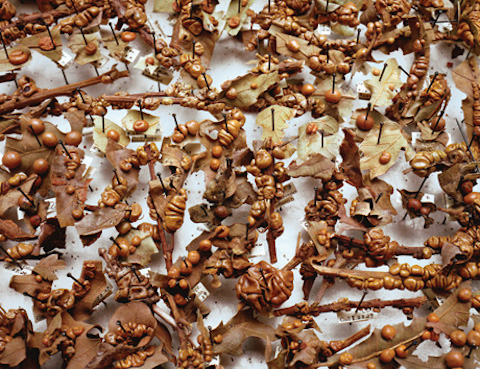I once spent a summer as a security guard at the Children’s Museum of Indianapolis. A wonderful place to visit, but my workday experience proved dreadfully dull. By far the highlight was being pulled off whatever exhibit I happened to be guarding to assist in collections, a cavernous backstage area where untold treasures were shelved without ceremony. The head conservator confided that many of these items would never be singled out for display. The thrift store egalitarianism that reigned here was far more appealing than the eye-catching, educational signage in the public area. From the oblivion of deep storage springs the potential for discovery.
How gratifying to learn that the 200 plus scientists employed by the American Museum of Natural History feel the same. As palentologist Mike Novacek, puts it in Shelf Life, the museum’s just launched monthly video series:
You can make new discoveries in Collections just like you can out in the field. You can walk around the corner and see something that no one’s quite observed that way before, describe a new species or a new feature that’s important to science.
The institution can choose from among more than 33,430,000 goodies, from ancient objects they’ve been carefully tending for more than two centuries to the samples of frozen tissue and DNA comprising the barely 13-year-old Ambrose Monell Cryo Collection for Molecular and Microbial Research.
Gems and meteorites!
Arrowheads and gourds!
Vertebrates and invertebrates!
There’s truly something here for…

Wasp enthusiasts (you know who you are) can thrill to the seven and a half million specimens in sex researcher Alfred Kinsey’s Cynipidae collection. (They’re ready for their close up, Mr. DeMille. Famous as they are, the first episode passed them over in favor of a more photogenic mock bee from the genus Criorhina.)
Future episodes will call upon in-house ichthyologists, paleontologists, anthropologists, astrophysicists, and herpetologists to discuss such topics as specimen preparation, taxonomy, and curation. Stay abreast (and — bonus!- celebrate Nero’s birthday with turtles) by subscribing to the museum’s youtube channel.
Related Content:
A Panoramic Virtual Tour of the Smithsonian National Museum of Natural History
Download the Universe: A Discerning Curator for Science eBooks
How to Make a Mummy — Demonstrated by The Getty Museum
Ayun Halliday is an author, homeschooler, and Chief Primatologist of the East Village Inky zine. She goes into more detail about her short-lived stint as a museum security guard in her third book, Job Hopper. Follow her @AyunHalliday


Leave a Reply